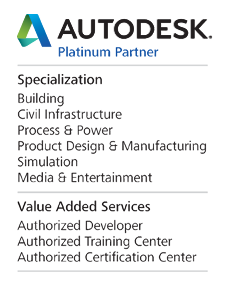2013-07-01 16:02
Autodesk 3ds Max 2013 Certified Professional
Cena netto: 324,39 zł
Cena brutto (23% VAT): 399,00 zł
Czas trwania: 120 min.
Szczegółowy program egzaminu
Egzamin Autodesk 3ds Max 2013 Certified Professional jest oceniany na podstawie liczby poprawnych odpowiedzi. Egzamin składa się z 35 pytań. Pytania mają różnorodny charakter, większość wymaga użycia programu Autodesk 3ds Max 2013 w celu stworzenia lub zmodyfikowania pliku danych, a następnie wpisania odpowiedzi w polu wprowadzania. Egzamin trwa 120 minut i jest oferowanyw języku angielskim (czas trwania może zostać wydłużony w niektórych krajach).
Zalecany poziom doświadczenia: szkolenie Autodesk 3ds Max 2013 i 400 godzin praktyki.
- Animation: Analyze the animation of an object using the Curve Editor, Change interpolation methods, Create a path animation and evaluate an object along the path, Differentiate Dope Sheet from the Curve Editor, Explain how to edit tangents with the Curve Editor, Identify Controller types, Identify playback settings, Identify the constraint used for an animation, Locate the value of keys in the Time Slider, Use animation passes and animation editors
- Cameras: Differentiate camera types, Edit FOV (Field of View), Explain Near and Far Clip Plane for your camera
- Compositing: Demonstrate how to composite multiple layers together, Demonstrate how to remap the color output for an image
- Data Management / Interoperability: Create layer renders and import into Composite, Differentiate common file types and usages, Use the import feature to import model data
- Dynamics / Simulation: Use modifiers for soft body simulation
- Effects: Identify an atmosphere effect, Identify an event, Identify particle systems, Identify Space Warp types
- Lighting: Compare Attenuation and Decay, Differentiate light functions in a scene, Identify parameters for modifying shadows
Use the Daylight System, Use the Light Lister
- Materials / Shading: Identify Shader parameters, Identify standard materials, Use Blending Modes, Use the Material Editor
- Modeling: Differentiate reference coordinate systems, Differentiate workflow, Identify Clone types, Differentiate standard versus extended primitives, Identify and use line tool creation methods, Identify Vertex types, Use object creation and modification workflows, Use polygon modeling tools, Use ProBoolean (Max) / Boolean (Maya)
- Rendering: Differentiate Renderers, Identify pass types, Identify rendering parameters, Use Render to render an effect pass
- Rigging / Setup: Describe common Biped features, Identify Bones, Identify Controller usage, Identify IK Solvers, Use Weight Table
- Scripting: Apply (run) scripts, Describe common use of scripts
- UI / Object Management: Describe and use object transformations, Identify Selection Regions and methods, Describe View configuration and ViewCube navigation


















